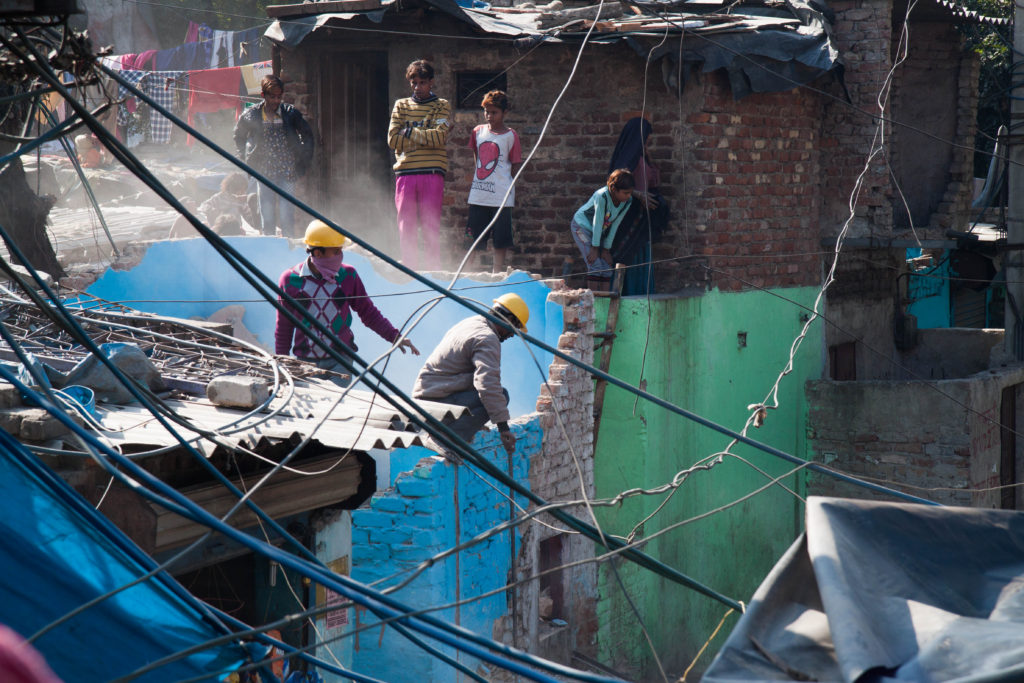
by Eleonora Fanari
“The vans and bulldozer came first, rumbling along the main road; they stopped
opposite the ghetto of the magician. A loudspeaker began to blare: “Civic
Beautification programme…Prepare instantly for evacuation to new site… this slum is
a public eyesore, can no longer be tolerated…while bulldozers moved forwards into
the slum, a door was slammed shut…but not all the magicians were captured; not all
of them were carted off…and it said that the day after the bulldozing of the magicians’
ghetto, a new slum was reported in the heart of the city.”
– Salman Rushdie, Midnight’s Children (1980)
In his famous novel Midnight’s Children, Salman Rushdie tells the story of a magician ghetto, or as Rushdie calls it, the “moving slum”. The magic infused in the novel has captured the attention of many readers worldwide, but only few know that this magic was the province of an actual community living in Old Delhi, and that the magician’s slum in which Saleem Sinai takes refuge is an actual slum that was subjected to “clearance” during the Emergency of the 1970s. Subsequently, the settlement managed to re-appear close to Shadipur bus depot.
Rushdie’s magicians are the magicians of Kathputli colony.
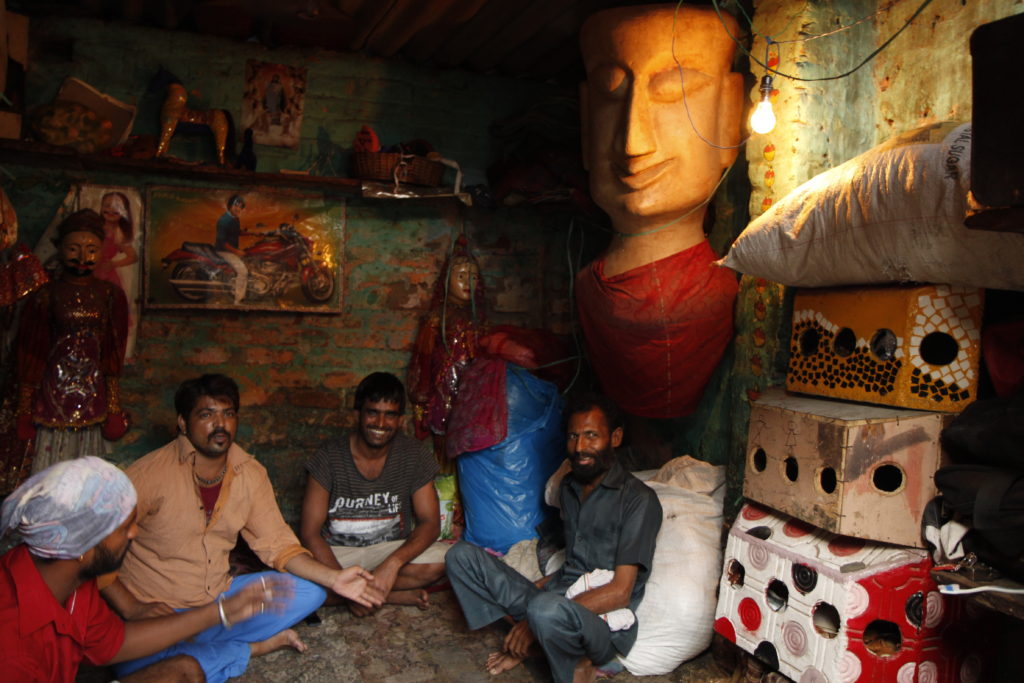
The story is repeating itself, and after 50 years of existence, the infamous colony of Kathputli (puppeteer in Hindi), is once again being threatened by the postcolonial city’s power, which, in the name of development and adjusting to the modern standards of a “global metropolis”, orders the eviction of its own inhabitants.
Kathputli, like other slums, is considered ugly and dirty ; the lack of sanitation, running water and sewage system gives this space a negative connotation while making the life of the inhabitants a constant struggle. Nevertheless, this does not prevent them from practising their beloved art, jumping on stage and performing in front of a respectful audience.
Today, Kathputli is considered one of the largest colony of artists in India, inhabited by acrobats, dancers, singers, musicians, puppeteers and shamans who share this ostensibly shabby space, where art and magic are practised amid narrow colourful streets. Kathputli, like other slums, is considered ugly and dirty ; the lack of sanitation, running water and sewage system gives this space a negative connotation while making the life of the inhabitants a constant struggle. Nevertheless, this does not prevent them from practising their beloved art, jumping on stage and performing in front of a respectful audience.
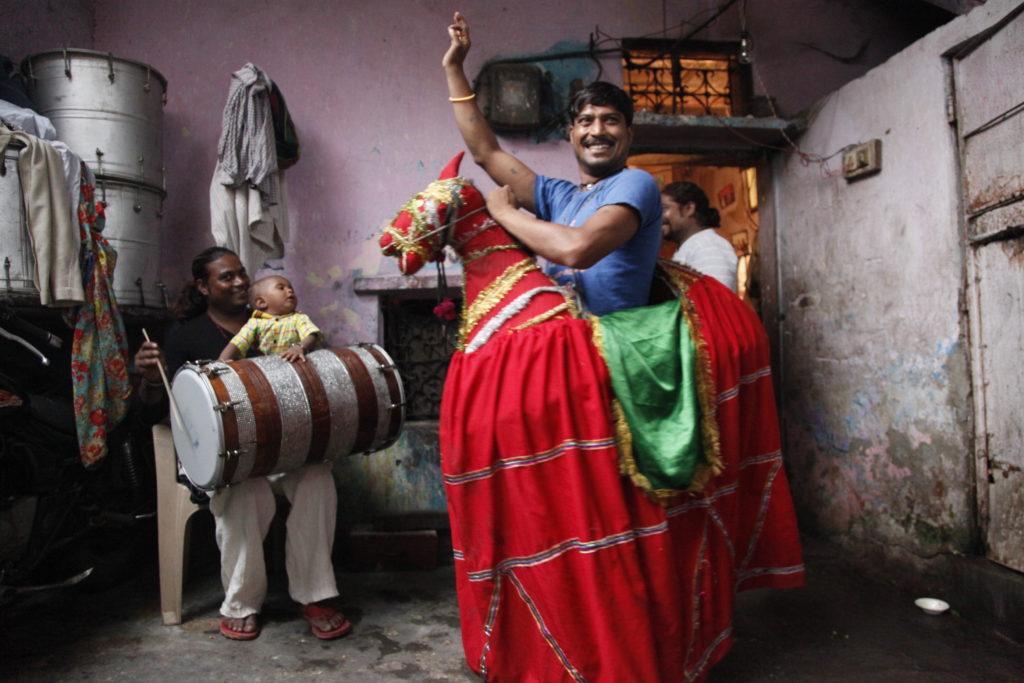
The present threat of eviction is one of the first strategically planned in-situ redevelopment projects aiming to rehabilitate the public space, both to finance the urban project that aims to make the city slum-free, and to relocate poor neighbourhoods. Being one of the first project, Kathputli will set up the base for a bigger plan of city gentrification. This means putting at risk the life of a huge population: in Delhi alone, the number of household inhabiting these almost “invisible spaces” accounts for more than 30 per cent of the city’s population.
The project and its opponents
In 2009, the Delhi Development Authority (DDA) sold this land to a private construction agency, Raheja Developers, famous for having created Mumbai’s modern skyline at the expense of numerous slums. The land was sold for just an amount of 6 crores rupees, (60 million rupees), an amount of money the colony dwellers argue they could have put together if they had known the land was far sale for such a low price at the time of sale. The real value of the land was of 1000 crores rupees (10.000 million rupees). The entire project is part of a larger development scheme launched in 2010 by the Indian government, the Master Plan of Delhi, 2021, a plan to make Delhi a global metropolis and a world-class city.
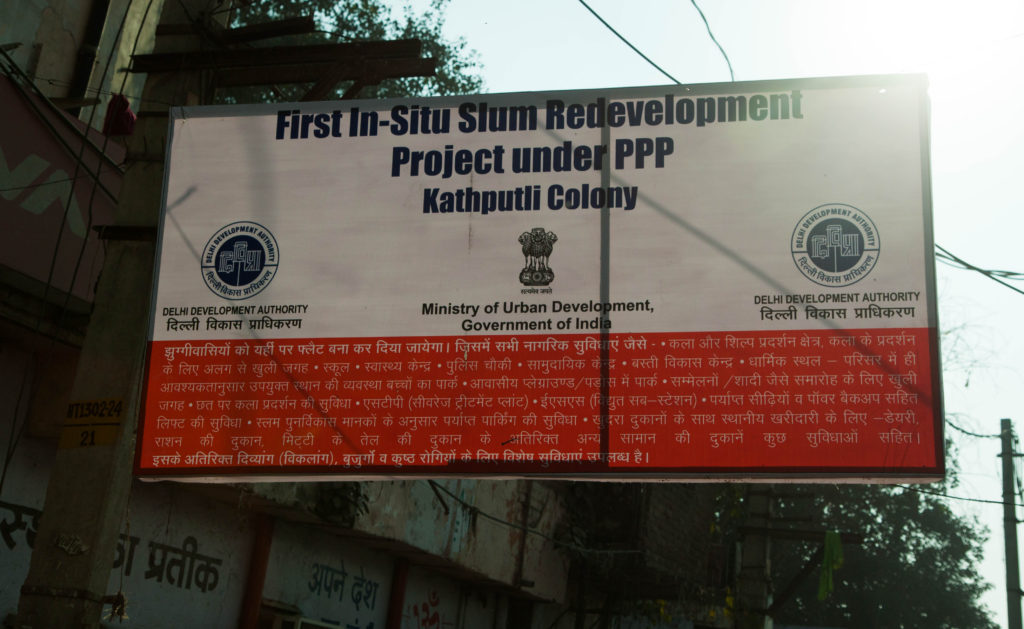
Following the plan, Raheja will be building a 5.22 hectares commercial center in the area. The result of this collaboration between the DDA and Raheja will be a luxurious showplace of grand proportions: the planned 54-floor tower will have a ‘skyclub’ and a helipad, and hold 170 premium condos of more than 1000 square feet per unit. Although the DDA is claiming that the Kathputli colony will be resettled in the same area as the planned high-end dwelling, no contract or written word was given yet.
Under the directive of the DDA, the police forcibly entered in the slum area with bulldozers, along with workmen carrying sledgehammers.
The apparent calm of the colony, which already witnessed violence and threat some years ago, got disrupted on 19 December 2016, when it got surrounded by 500 policemen and paramilitary troops. Under the directive of the DDA, the police forcibly entered in the slum area with bulldozers, along with workmen carrying sledgehammers.

While many houses have already been torn down, the dwellers of the colony, supported by NGOs and volunteers, are organizing themselves to oppose the unconsented demolition. Anwari Begun, a Rajasthani woman living in the colony argues, “This is our land! We came here more than 50 years ago when this place was only forest and we created our colony with our hands. Whose else is this land?”.
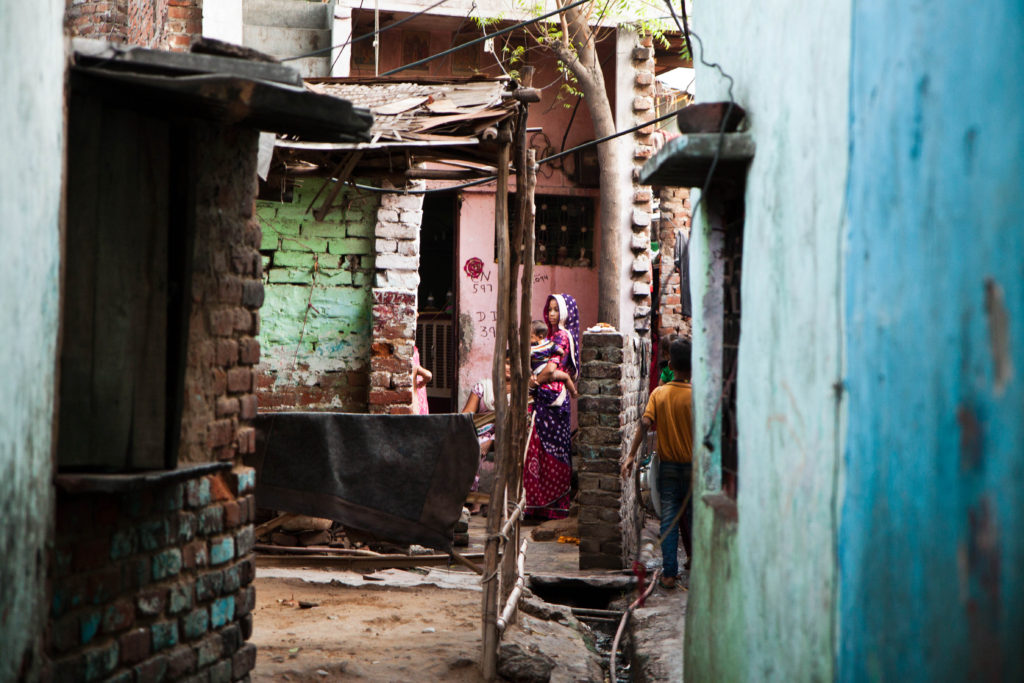
The entire process has been carried on without any involvement, or any kind of agreement reached with the inhabitants of the colony. The dwellers only learned about the eviction plan in 2013, when rumors came up in the news. At that time, a wave of violence hit the colony: some dwellers were beaten up by the police and other were arrested on false charges. Until now, only 400 households have moved into the transit camp in Anand Parvat, 4 km away from the current Kathputli area. Although some families have signed contracts recognizing their relocation to the transit camp as “voluntary”, Delhi Solidarity Group, the NGO supporting the cause, claims the officers are forcefully pushing the families to leave their houses, and some dwellers say their houses got demolished without any consent. Moreover, on January 8th, the 25 public toilets available in the colony were demolished, leaving the dwellers in even worse conditions hygiene-wise.
Although some families have signed contracts recognizing their relocation to the transit camp as “voluntary”, Delhi Solidarity Group, the NGO supporting the cause, claims the officers are forcefully pushing the families to leave their houses, and some dwellers say their houses got demolished without any consent.
Bhirju Bhaat, a young puppeteer of the colony who is active in the movement against the demolition, explains the inconsistencies of the project. “After almost four years of discussions, the DDA has not given us any document that specify the entire conditions of the relocation plan. They argue they will build up 2,800 apartments for all of us in the 20% of the entire area, but the number of the entire households is of about 3,600! Where will the other residents go? Moreover we do not want to live in 54-storey apartment buildings. What if the elevator breaks down? Who will fix it? “.
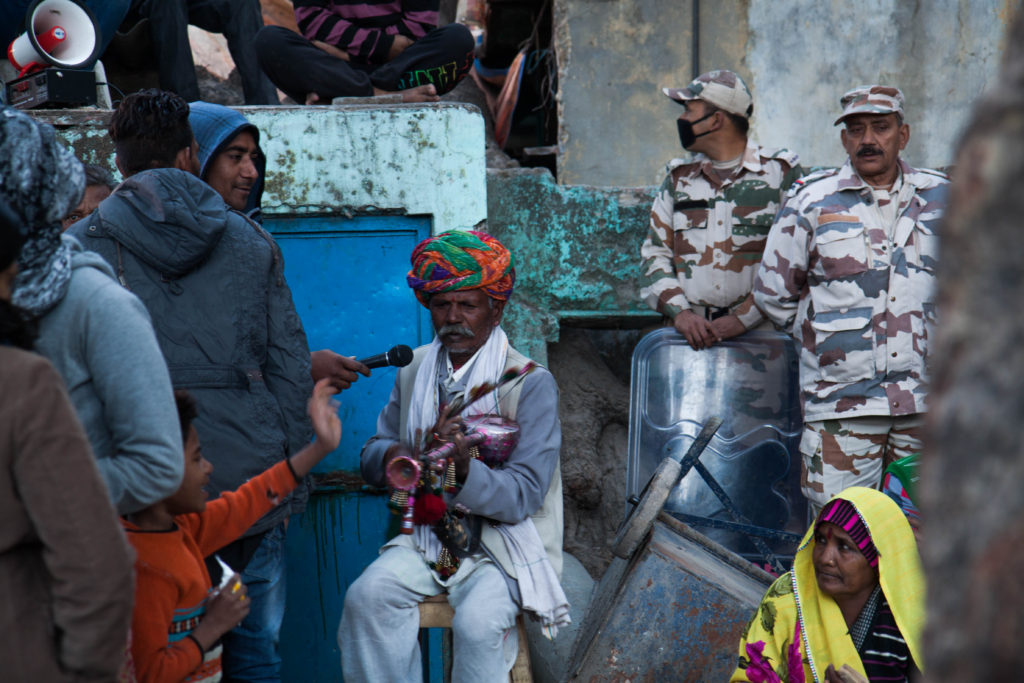
Today, the colorful Rajasthani clothes commonly seen in the settlement are mixed up with the uniforms of the numerous police officers. Puppets and dholas seem to already be submerged under the broken bricks that lay on the edge of numerous lanes, and songs evocating Indian mythology got substituted by political slogans. The dwellers are struggling for the recognition of their rights, at the daily meeting thousands of people are gathering to discuss their strategies, and to propose a new plan of development. “We won’t move unless all our demands are recognized, and only when all of us have a written paper with the allocated flat”, shouts Dilip Bhaat, the Pradhan (leader) of the colony.
The violence suffered by the inhabitants in the last years, and the brutality with which the police have invaded the colony definitely do not help to create an environment where solutions and decisions can be negotiated.
Overall, the project presents many inconsistent and unacceptable burdens, such as the current environment in the relocation site, which lacks of basic services such as running water, and hygienic conditions seem to be worse than those of the slum. Moreover, the violence suffered by the inhabitants in the last years, and the brutality with which the police have invaded the colony definitely do not help to create an environment where solutions and decisions can be negotiated.
Development for whom?
How much this process will actually benefit the people of the colony is highly debatable. Even if people obtain the promised flats and the recognition of their housing rights, will this represent a real improvement? Clearly, this in-situ relocation plan does not correspond to the kind of surroundings the people of the colony are used to, and it will be hard for them to adjust to the new life habits linked to the changed housing arrangements.
It is obvious that the people of the colony are not feeling very confident about living next to a massive, posh condo tower. Most of them do not believe it will be possible to share this space with the city’s wealthy inhabitants, and believe even less that they will provided with free houses close to a such iconic tower that embodies the identity of the idealized modern city.
It is obvious that the people of the colony are not feeling very confident about living next to a massive, posh condo tower. Most of them do not believe it will be possible to share this space with the city’s wealthy inhabitants, and believe even less that they will provided with free houses close to a such iconic tower that embodies the identity of the idealized modern city. “Nobody wants to live close to poor people” argues a young puppeteer of the colony, Vikram Bhat.
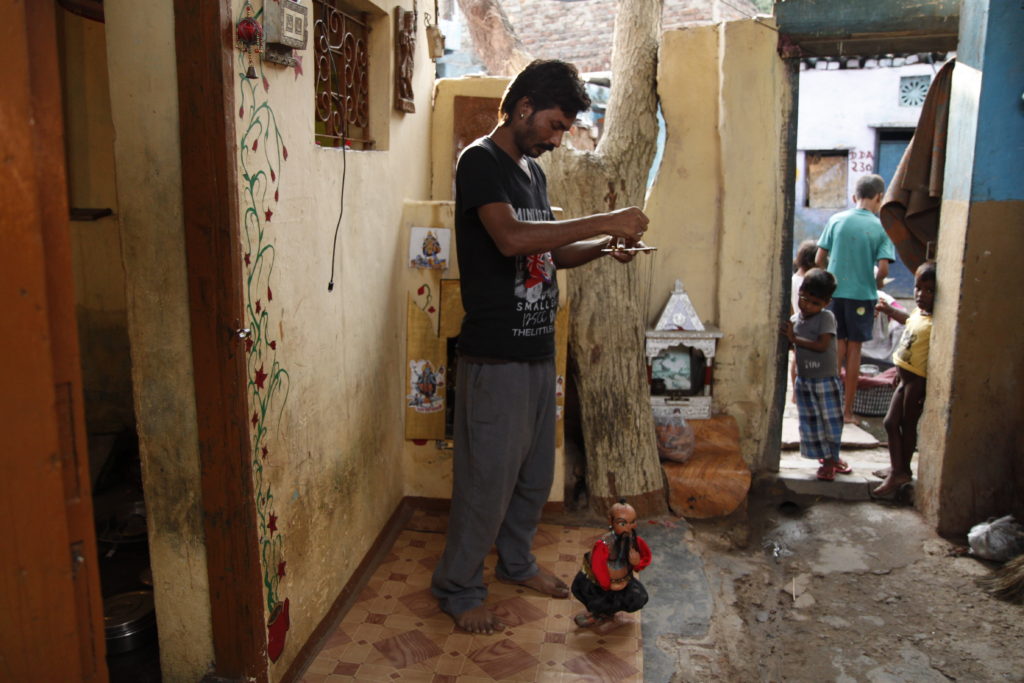
The inhabitants also feel uncomfortable living in small and high floor flats. “How would we work in one-room flats with our wood and stone, which will apparently also host our families, and our huge equipment?” Asks Lal Bhaat, a Master puppeteer from the Kathputli colony.
It is clear that the flats will create an environment where these slum dwellers will prefer not to perform, as they will not have enough space to manage their material and practice. They will hence try to generate income from a new sort of livelihood and the art will be lost. Although they will be able to find other jobs, they will probably experience fear and embarrassment in doing another activities, as argued by G. Sikkha.The Kathputli colony will be destroyed and people will feel isolated and depressed. The women will start doing household chores as maids in the nearby high-end districts and apartments to meet their daily needs. Their lives will be harmed, but their identities as artists and their economic autonomy will also be completely lost.
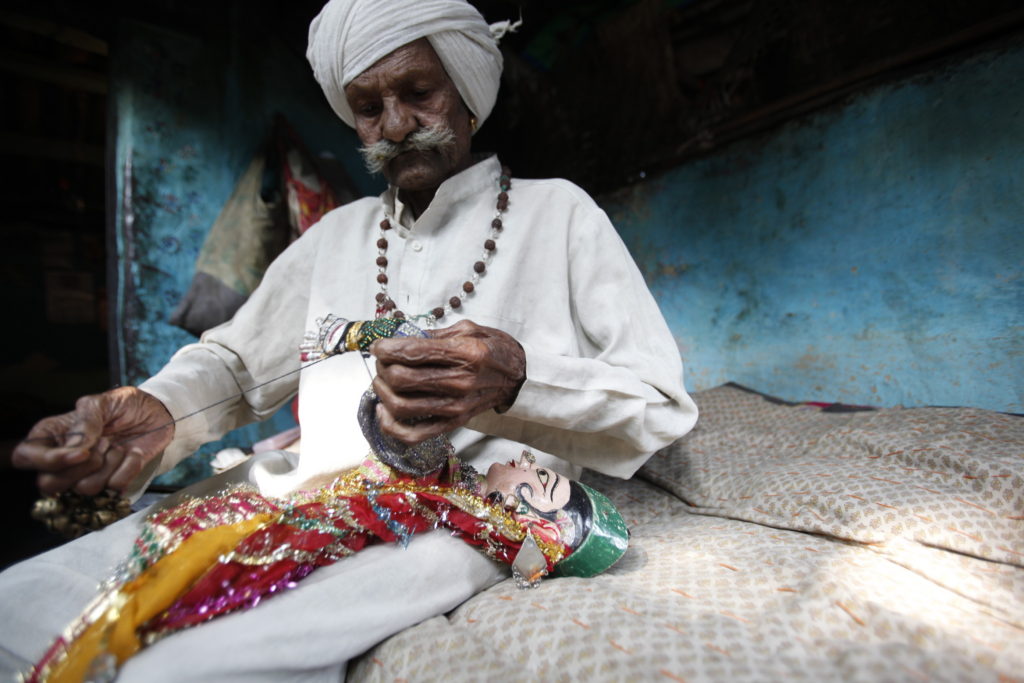
What strikes me most in this struggle is the incapacity of the government to think of an urban development plan which differs from the commercial use of public space. The development model pursued by the Indian government continues to be driven by market forces, through which every place sees and evaluates itself. The gentrification of the Kathputli colony’s space relies on the creation of consumerist spaces necessary for the capitalist model of development to continue to thrive. It will convey the triumph of the Modern Indian State, symbolized and embodied by the iconic tower.
What strikes me most in this struggle is the incapacity of the government to think of an urban development plan which differs from the commercial use of public space. […] Social discrimination drives the Indian government to consider this space an embarrassment, and as a slum to be cleaned up, instead of looking at Kathputli colony as a resource.
As Ashish Kothari observes, in the present globalization era, countries and city have been redefined exclusively according to the world market, changing rapidly the meaning and function of places and their relation to each other and to their inhabitants.
Social discrimination drives the Indian government to consider this space an embarrassment, and as a slum to be cleaned up, instead of looking at Kathputli colony as a resource. If the policies were able to respond to the need of the people, as they are supposed to, and merge some commercial and economic activity with a real inclusion of diversity into the city spaces, Kathputli would be transformed in an attractive artistic space, with a craft market, a open theatre, a dance school. All this could benefit both the people and the government, which could implement its tourist development strategy in this peculiar and enchanting area.
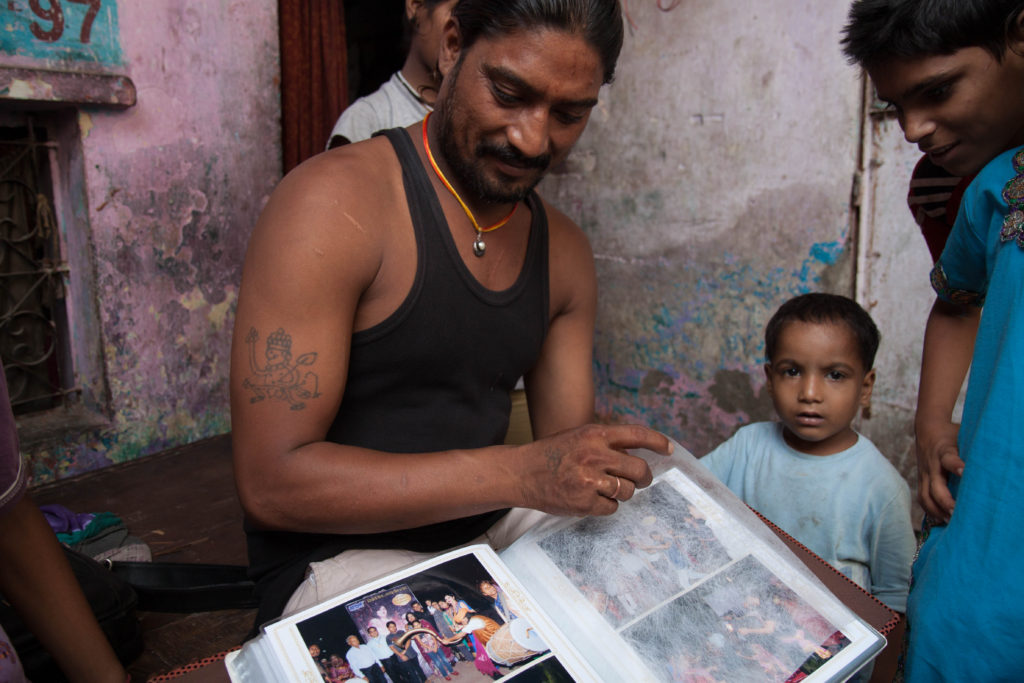
In fact, dwellers submitted their own proposal for local development, which integrated tourism and artistic contributions to the local economy. This proposal was not considered a serious alternative and rejected by the government. If this proposal had been accepted as a viable alternative, and agenda of improvement of living conditions for slum dwellers could have substituted the exclusionary, paternalistic and short-sighted “clean up the slums” plan. This would have been a sound development strategy using human resources in the best way possible and contributing in meaningful and sustainable ways to the local economy and cultural life.
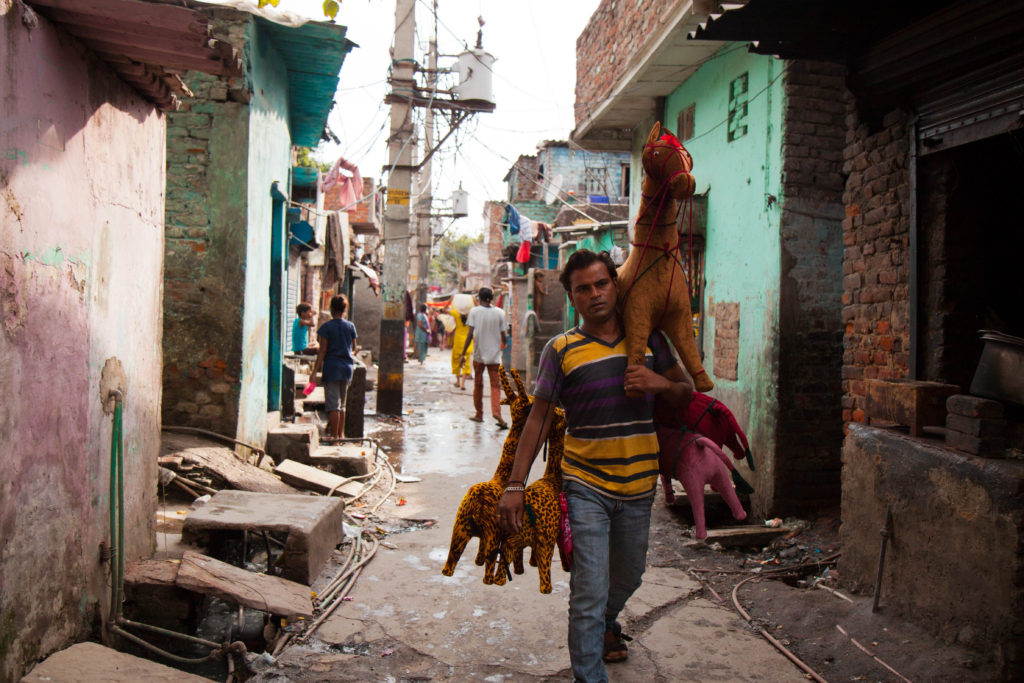
If the government does not use its power to intervene and modify these structures of oppression, India’s national motto “unity in diversity” will remain wishful thinking.
Unfortunately, today, both policies and architecture are failing at constructing spaces that are suitable to slum dwellers’ needs. As the professor Tapan Chakravarti argues, “it will be a tragedy if we lose such living evidences of intuitive architectural practice; it is fast deteriorating at the present site and it needs to be reinvented with sensitivity”. A sterile reconstruction centered on designing spaces for wealthy newcomers at the detriment of the existing community’s right to self-determination will completely alienate people of the Kathputli colony from their surroundings. In a society like India, with an entrenched caste system, this kind of gentrification becomes even more dangerous as it is naturalized and justified in the already present stratification of society. If the government does not use its power to intervene and modify these structures of oppression, India’s national motto “unity in diversity” will remain wishful thinking.
Eleonora Fanari is a researcher currently based in New Delhi. She has been working on the issue of social exclusion, minorities, and land rights in collaboration with several non-governmental organizations. She is currently associated with Kalpavriksh, a non profit organization working on environmental and social issues, where she is carrying on research on conservation and tribal rights in protected forest areas. She blogs here.